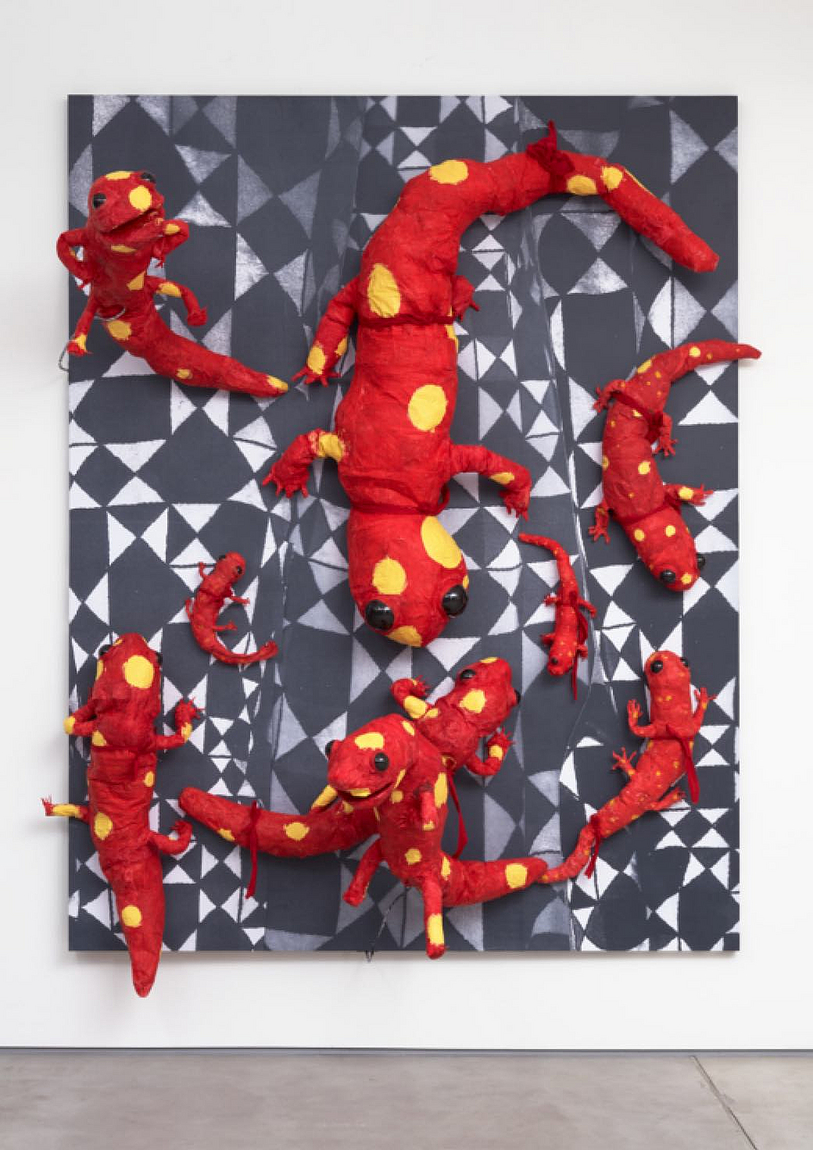Monster Chetwynd
Londen ,
Salamanders
(gemaakt onder de naam Marvin Gaye Chetwynd) 2018
wood, steel, photocopies, paint, latex, fabric
290 x 224 x 78 cm
2018.MGC.01
Each of the works in the installation in which this work was first shown has as its basis a large-scale digital print of an historical composition, relating to a performance by Chetwynd – whether the blooming garden fresco of Livia’s Villa from the first-century BC (which previously formed the backdrop to the performance ‘Here She Comes’ at the Royal Festival Hall in 2015), or Richard Dadd’s feverishly intricate vision of The Fairy Feller’s Master-Stroke (1855; a nod to her 2003 performance ‘Richard Dadd & the Dance of Death’ at Tate Britain). Spreading across wooden panels in the style of wallpaper, these enlarged images are overlaid by sculptural objects, including a monstrous rubbery bat and a salamander, akin to the handmade props and costumes that populate Chetwynd’s performances. In several instances, she uses the concept of the diorama (literally something to be ‘seen through’) as a structuring principle, creating a layered iconography of objects and images.
In certain cases, Chetwynd’s combination of panoramic scale and visionary imagery evokes the genre of high Romantic painting – in particular the melodramatic canvases of John Martin (1789-1854); her latest paintings in this respect translate the Gothic turbulence of her Bat Opera cycle (begun in 2003) onto an ambitious new scale. At the same time, theatrical conventions are signalled and subverted through allusions to the containing structures of the proscenium arch and wings, or to the formula of the tableau vivant.
Chetwynd’s decision to extend painting into the realm of performance, and vice versa, has grown out of a long series of experiments – most recently her performance ‘The Green Room & Science Lab’ in Basel (2017) – in which the backdrop to the action has become a vital component of the live performance, volatile and evolving. In some of her new paintings, objects may be removed from the surfaces of the work in the style of props – transferred from the picture plane into ‘real life’. The ‘painting’ is in this way contingent and mutable – a projection of fantasy into reality, and a springboard for improvisation.

![[Translate to Engels:] [Translate to Engels:]](/fileadmin/bestanden/werken/2018.MGC.01a.jpeg)